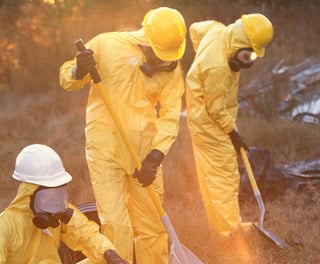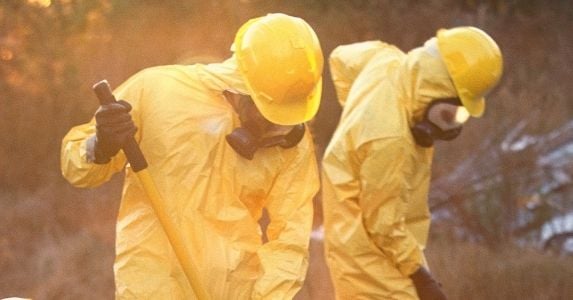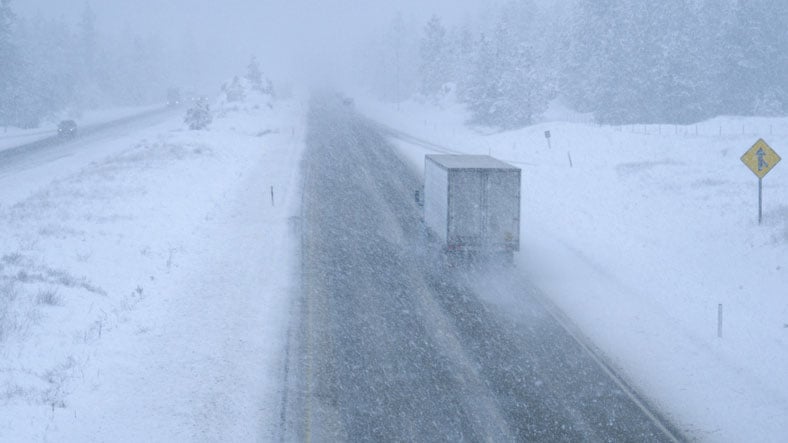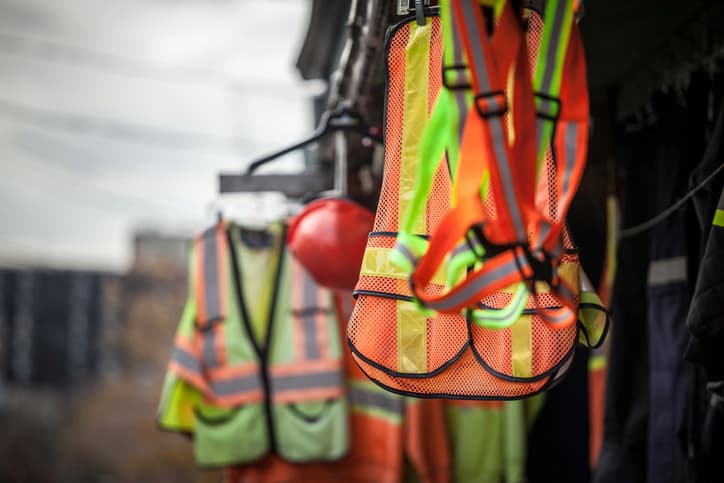OSHA Respiratory Protection: What Employees Need to Do BEFORE Using a Respirator
 Several OSHA regulations require the use of respirators, including OSHA's Respiratory Protection standard, 29 CFR 1910.134. Safety respirator masks are used to protect employees from harmful dusts, smokes, mists, and other materials or hazardous atmospheres. While these protective devices are necessary in certain circumstances, OSHA prohibits their use until certain requirements have been met to prove that employees know how to use them properly. Continue reading to learn some of OSHA's requirements for using safety respirators and what to include in your respiratory protection program.
Several OSHA regulations require the use of respirators, including OSHA's Respiratory Protection standard, 29 CFR 1910.134. Safety respirator masks are used to protect employees from harmful dusts, smokes, mists, and other materials or hazardous atmospheres. While these protective devices are necessary in certain circumstances, OSHA prohibits their use until certain requirements have been met to prove that employees know how to use them properly. Continue reading to learn some of OSHA's requirements for using safety respirators and what to include in your respiratory protection program.
Medical Exam
Before donning a respirator, employees must be medically cleared to wear a respirator by a physician or other licensed healthcare professional. As part of the medical clearance process, a medical questionnaire is required to be answered by the employee. The questionnaire is confidential and has questions related to the employee's health history and focuses on the task in which the employee is required to wear the safety respirator. The physician or other licensed healthcare professional will make the determination if the employee is physically fit to wear a respirator.
Respiratory Protection Program
The use of respirators is widespread throughout higher education, healthcare, life science, and industrial facilities; however, OSHA regulations state that respirators can only be used after an individual has received the proper training. This is where a formal respiratory protection program comes in. As previously mentioned, a respirator's job is to protect, and it can only protect if the individual using it knows how to operate it properly. Employers should understand what is required before using a respirator.
Prior to issuing a respirator, employers must have a written respiratory protection plan. The plan is required to include key information such as respirator selection, medical clearance/questionnaire, training, fit testing, and proper use/storage of the respirator.
According to OSHA, respiratory protection training must be presented in a way that the employee can understand and must include at least the following information:
- Why you need to use the respirator;
- What the respirator can and cannot do to protect you;
- How to properly inspect, put on and take off, and use your respirator;
- How to check the seal of your respirator (also called a "user seal check");
- How to use the respirator mask effectively in emergency situations, including situations in which the respirator doesn't work properly;
- How to recognize medical signs and symptoms that may limit or prevent you from using a respirator;
- How improper fit, usage, or maintenance can reduce your respirator's ability to protect you;
- What the procedures are for maintenance and storage of the safety respirator; and
- What the requirements are for federal OSHA's or your state OSHA's Respiratory Protection Standards.
Fit Test
As part of the respiratory protection program, for an individual to be able to use a respirator, they must be initially fit tested and annually thereafter to assure the respirator provides a tight fitting seal. In order for a respirator to protect an employee, it must properly fit their face. If it doesn't, the individual is at risk for breathing contaminated air and exposure to other hazardous substances.
An employer ensures that a respirator will fit an employee by performing a fit test with the same make, model, and size of respirator that the employee will be using while on the job. This test checks the seal between the respirator's face piece and the employee's face, and usually takes about 15-20 minutes to complete. Fit testing can be done using either qualitative or quantitative methods, which we will discuss further in an upcoming blog post (stay tuned!).
Respirators play an important role in many industries to protect employees from harmful smokes, gases, fumes, vapors, and other hazardous materials or atmospheres. Where these toxic substances are present in the workplace and other engineering controls cannot eliminate them, respirators are necessary. However, before employees begin using respirators at work, they need the proper training, testing, and medical clearance to ensure they know how to use them correctly and safely. The information above is not an all-encompassing guide, but rather a brief overview of some of the steps needed in order for employees to use respirators in the workplace. Triumvirate Environmental offers EHS inspection services.
To learn more about respiratory protection programs and OSHA's Respiratory Protection standard, please visit the links below:
- OSHA Respiratory Protection Standard - 29 CFR 1910.134
- OSHA Respiratory Protection Frequently Asked Questions






